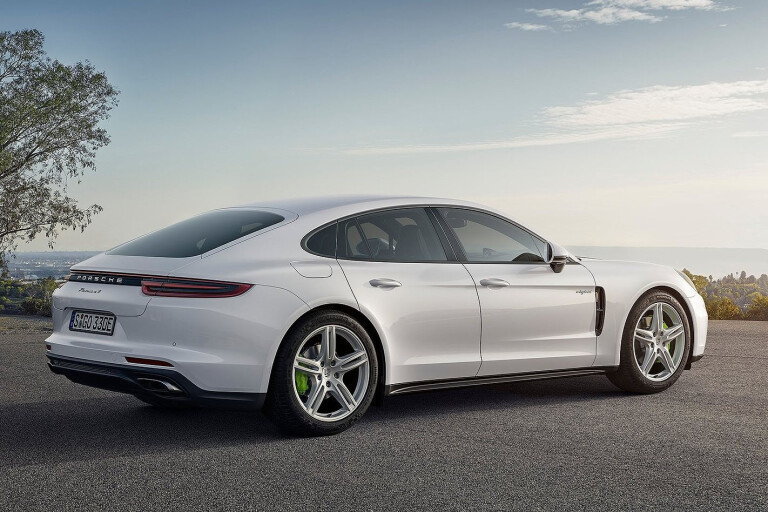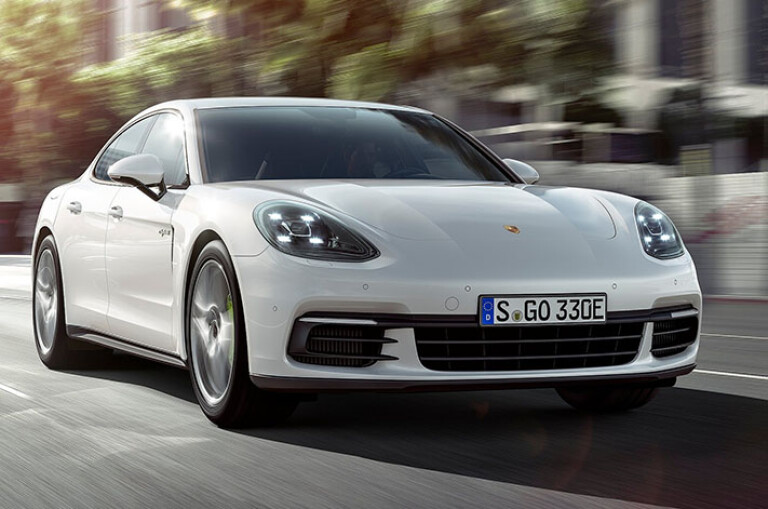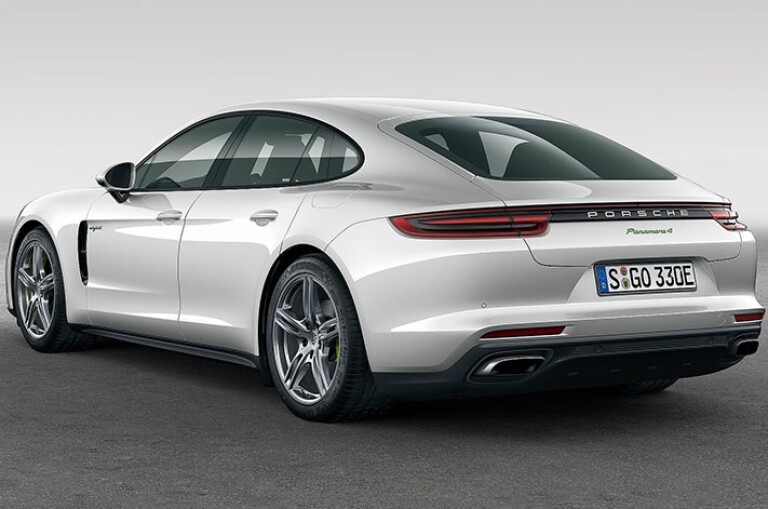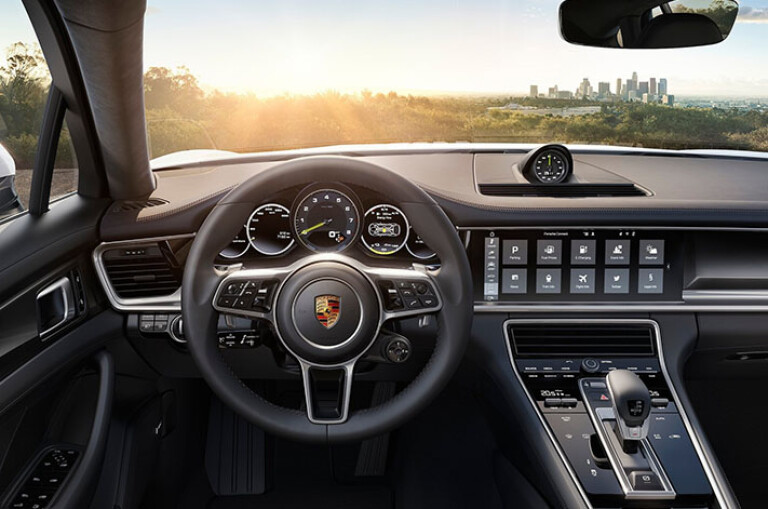
TELL ME ABOUT THIS CAR
This is the plug-in hybrid version of the second-generation Porsche Panamera (the 4 stands for four-wheel-drive), featuring an all-Porsche powertrain including a 243kW 2.9-litre twin-turbo V6 engine and 100kW electric motor.
When fully charged it has an all-electric range of 50km and you can travel on the lithium-ion batteries alone up to 140km/h. The lithium-ion battery takes 5.8 hours to fully charge, or 3.6 hours with the optional charger, and its state of charge is displayed on either of two seven-inch screens flanking the analogue tachometer.

But this is no glamorous German cousin to a Prius. The petrol and electric motors combine to produce a whopping 340kW and 700Nm of torque which makes for instant acceleration and a 0-100km/h time of 4.7 seconds - more than half a second quicker than the standard V6 turbo Panamera 4.
It’s priced from $248,500 – our test car featured options including 21-inch gloss-black rims ($9380), electric sunblinds for back and rear side windows ($2940), LED matrix headlights ($2690) and seat ventilation ($2190) which pushed the price to $264,120.
STRENGTHS
- The electric motors work in concert with the twin-turbo V6 to boost output, and the effect is even more pronounced in Sport or Sport + mode. The instant torque they provide makes for exhilaratingly quick launches from a standing start while leaving plenty of go in reserve for overtaking.
- The Panamera 4 E-Hybrid’s forte is grand touring and you could drive for hours in total comfort on highways or meandering B roads. That said, it also handles mountain hairpins commendably, with minimum body roll and a compliant-yet-controlled rear end despite its 2.2-tonne mass and five-metre length.
- The Hybrid mode is perfect for everyday driving, and seamlessly switches between electric and petrol propulsion.
- The 8-speed dual clutch automatic transmission sends power to all four wheels and delivers smooth shifts. There are paddle shifters if you want to be hands on.

- It has head turning looks with a slender profile that draws on the Porsche 911's iconic silhouette, and manages to retain the same elegance as its coupe cousin despite the additional doors.
- The interior is stunning, and combines quality finishes with jaw dropping styling dominated by a huge 12-inch central information and entertainment screen and aircraft-like centre console with glass look soft-touch buttons. The number of switches is daunting at first but it’s all reasonably intuitive once you take time to familiarise yourself.
- Rear seat drivers don’t miss out on gadgetry, with a large panel/touchscreen for them to control climate control, infotainment, the rear sunroof shade and window blinds.
- Bluetooth syncing is very quick and simple.
- The air suspension has three settings. The default comfort mode is excellent for general touring while the sports modes tighten things up without compromising comfort. You can also raise and lower the ride height to suit different road conditions.
- Bright green highlights to exterior badging, brake calipers and gauge needles are a subtle but likeable reminder of the hybrid powertrain.

WEAKNESSES
- The Panamera 4 E-Hybrid official combined fuel consumption figure is 2.5L/100km, however it assumes a lot of the driving is done in battery-only E-mode. But, even driving around town in hybrid mode, the trip computer was showing the kind of mid-teen, real-world fuel consumption figures you’d get from a 5.0-litre V8 Ford Mustang.
- Despite the fact this is a large luxury sedan it only seats four people including the driver. The rear seats are very comfortable, but headroom is pretty tight because of the sloping roof line and panoramic sunroof.
- The doors aren’t soft shutting and need quite a pull or shove to close properly
- At almost 2 metres wide you’ll have to be very careful when parallel parking to avoid kerbing the big, 21-inch rims.

- The Hybrid system defaults to E-mode each time the car is restarted which can be confusing because there’s no tell-tale engine noise to tell you the car is ‘running’.
- The batteries reduce the boot space to a hatchback-like 405 litres. There’s enough space behind the back seats, but little height between the raised boot floor and boot lid.
- The serene cabin environment when travelling in E-mode is overcome by wind noise once you get up to highways speeds.
ARE THERE ANY RIVALS I SHOULD CONSIDER?
The BMW 740e, if you’re looking at luxury hybrid sedans, though the Tesla Model S, while being all-electric, is a closer match in terms of performance.
COMMENTS